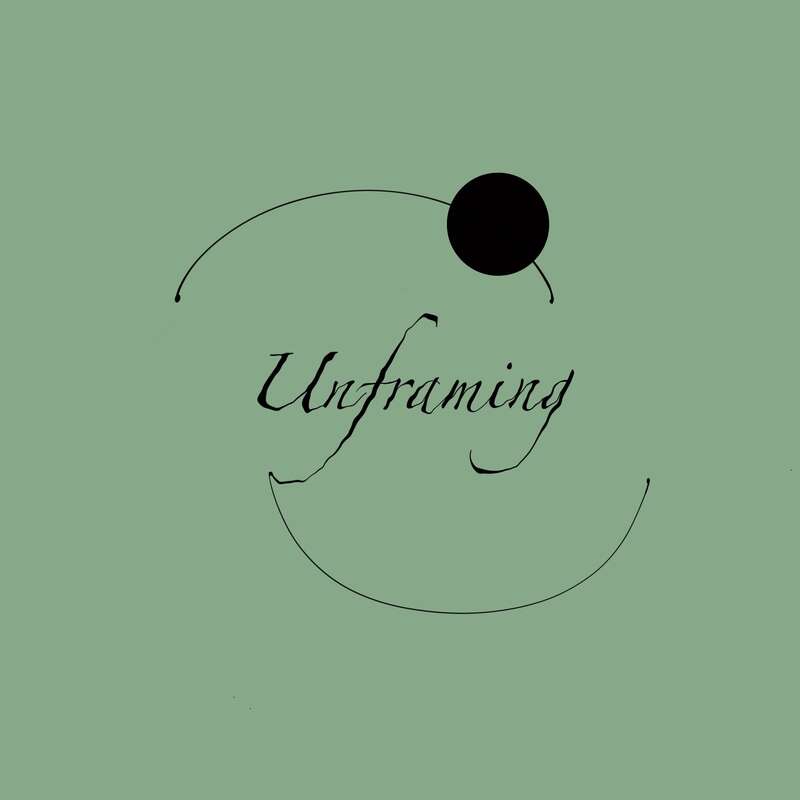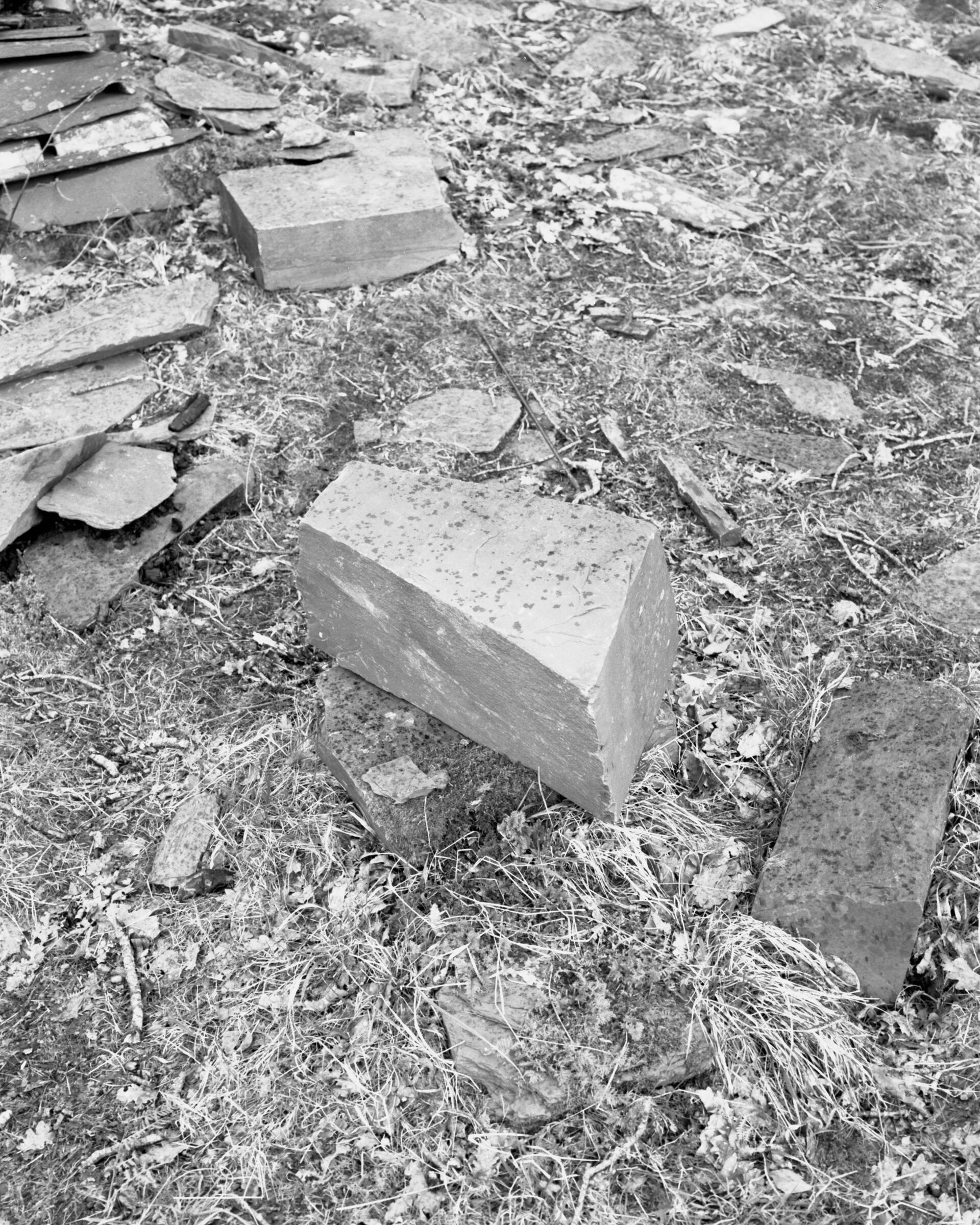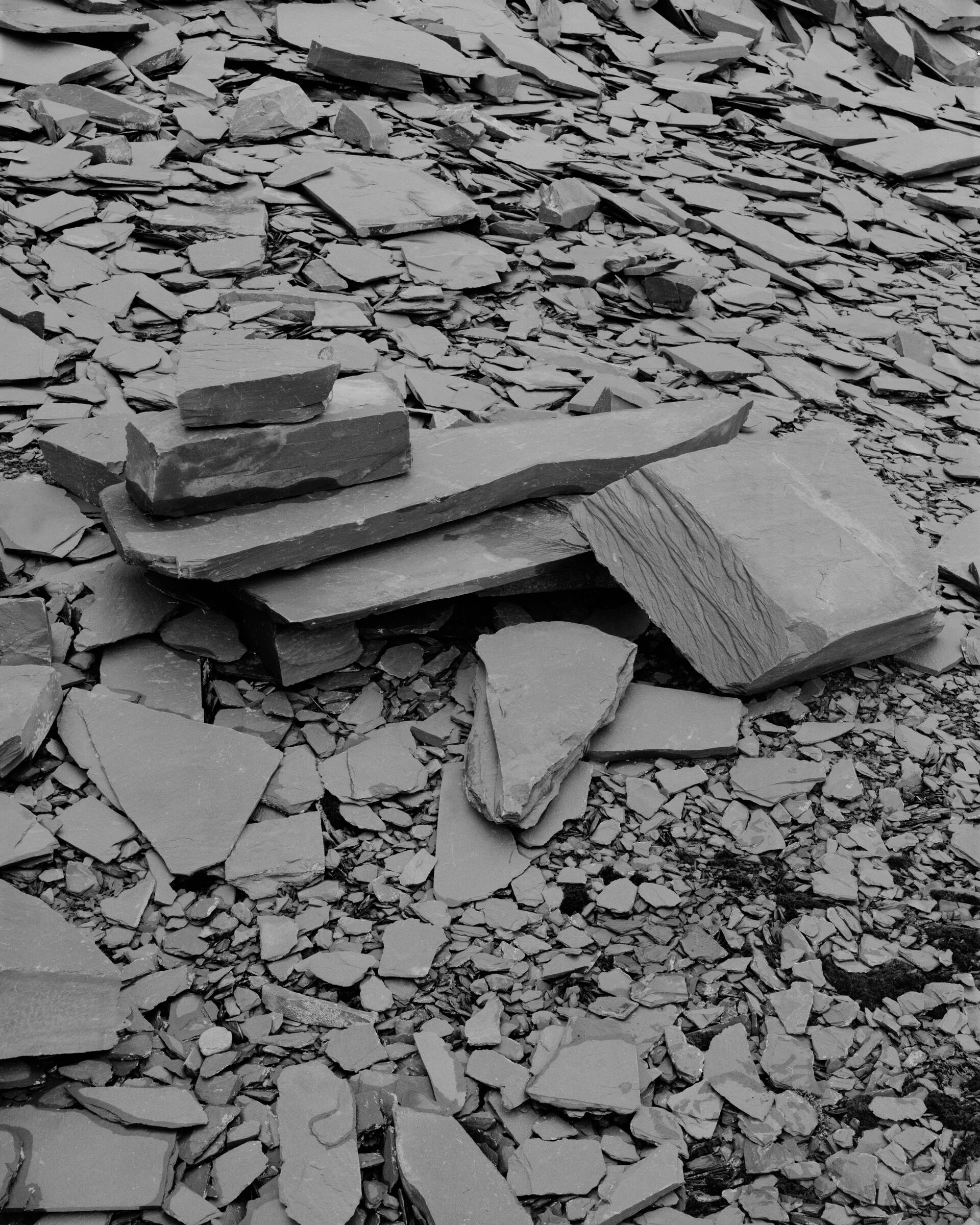Four hundred and eighty-five million years ago, during the Ordovician period, sediments from unnamed underwater volcanic eruptions slowly settled on the hillsides of nameless mountains and on sea floors. Compressed over millions of years, these sediments combined and compacted, becoming stone – stones that humans have named ‘slate’, a bluish, purplish, greyish geological formation that dominates the landscape of North Wales.
Doreen Massey, British feminist, Marxist, and cultural geographer, asks us to consider space as dynamic and ever changing. The third opening proposition of her seminal book For Space is ‘that we recognise space as always under construction’:
Precisely because space on this reading is a product of relations-between, relations which are necessarily embedded material practices which have to be carried out, it is always in the process of being made. It is never finished; never closed. Perhaps we could imagine space as a simultaneity of stories-so-far.Doreen Massey, For Space (London: SAGE Publications, 2005), 9.
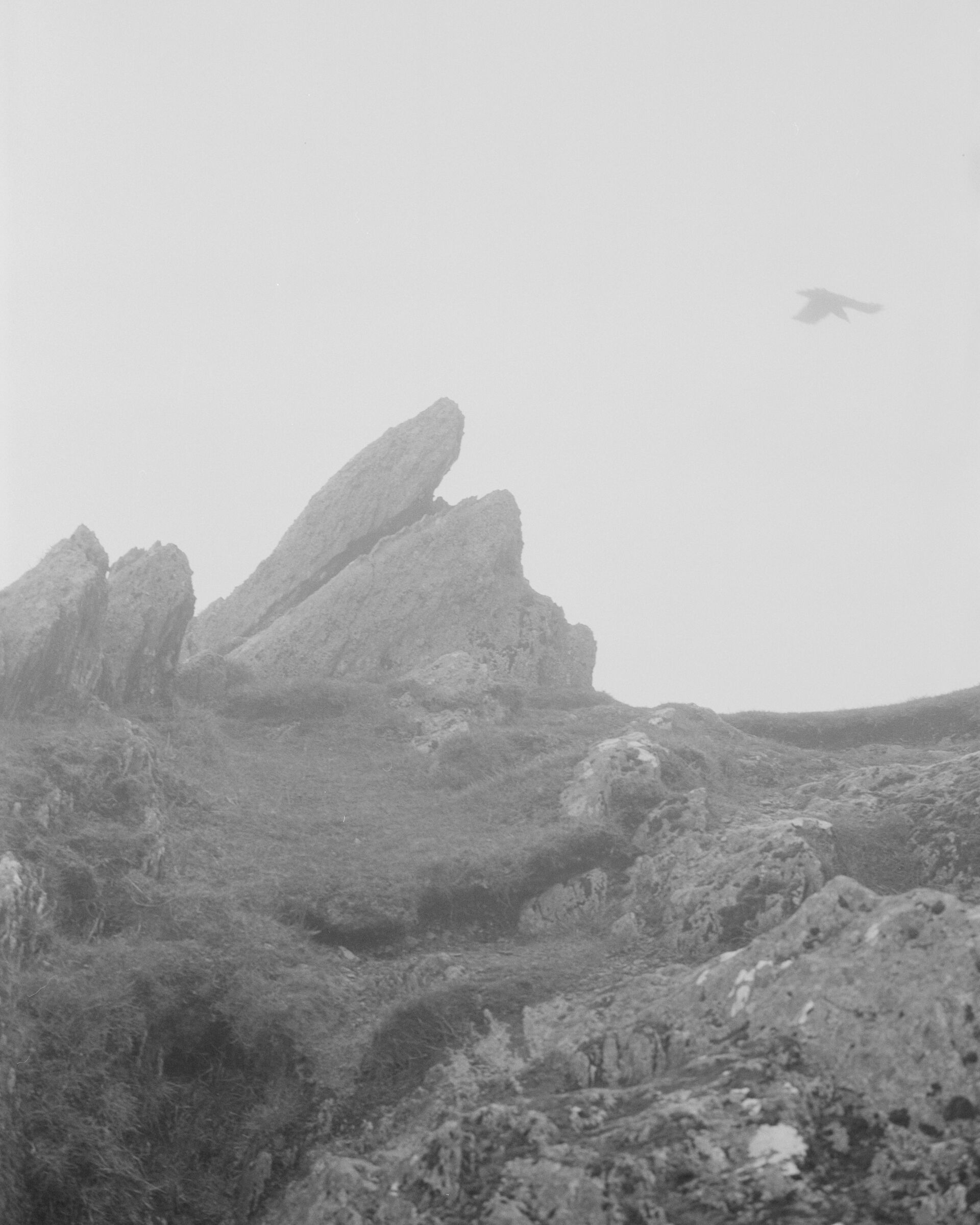
The peak of Yr Wyddfa, North Wales. Medium format photograph.
I believe the materiality of natural elements within a landscape to be an important access point to sensing multiple temporalities that exist and collide within a space, as a ‘sedimentation of time’.Here I invoke Reinhart Koselleck’s notion of the ‘sedimentation of time’, particularly in geological stratification, as a metaphor for ‘human, political, or social history as well as into structural history, we can analytically separate different temporal levels upon which people move and events unfold, and thus ask about the longer-term preconditions for such events.’ See Sediments of Time: On Possible Histories (Stanford, California: Stanford University Press, 2018), 3. Elements such as stones are a node in which we can start to embrace and visualise Massey’s propositions for recognising the multiplicity and dynamism of space. Stones hold, within their grain and form, many timescales and histories, many stories, both human and nonhuman. In this way, I see them not as static but as vibrating with information, a natural archive on a long lifecycle from dust to dust, collecting human marks.
Stones such as slate have become an important focus of my artistic research. These objects are not only one of the defining geological formations of the Eryri region of North Wales but also a material at the heart of much of the industry historically in the area. In the small village of Llanberis, one can walk to the peak of Yr Wyddfa, the highest mountain in the British Isles south of the Scottish Highlands. Reaching this peak, one is met with a slate cairn built upon volcanic rock formations of rhyolites and tuffs. This cairn is a geographic marker that was used in the past to aid trigonometric devices in seeing the peak, a way to accurately measure the distance between locations. The current iteration of the cairn was rebuilt in the year 2000; it is no longer used for mapping but rather marks a site of touristic spectacle and natural beauty that has been frequented daily by tourists since the Victorian era.
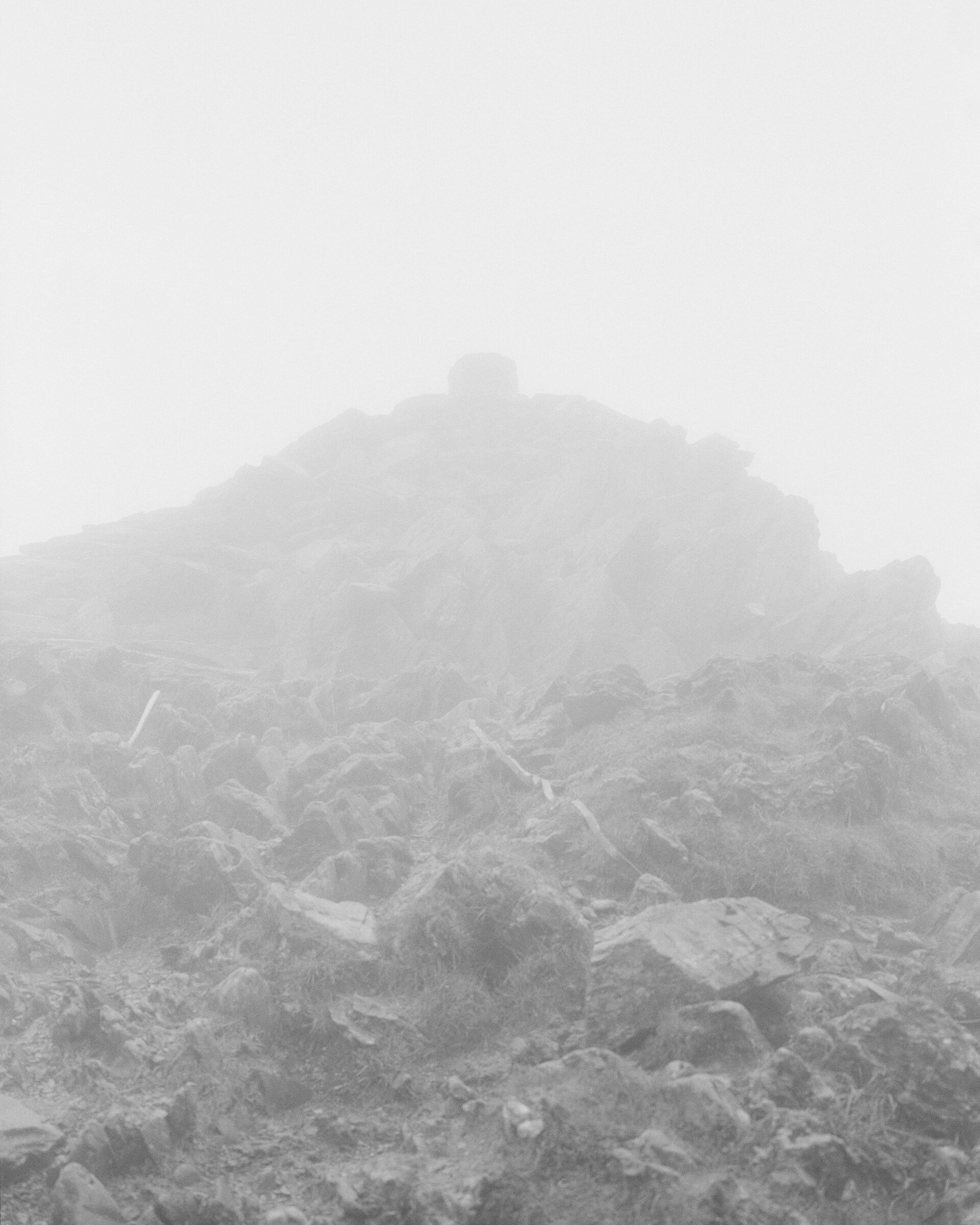
The cairn and highest manmade point of the peak of Yr Wyddfa, North Wales. Medium format photograph.
Only a few kilometres away, directly overlooking the village of Llanberis, is Dinorwic Quarry, one of the largest slate quarries Wales has seen. By the late 1800s, this now-closed quarry at times employed over 3,000 men, and was part of an industry that nationally, at its peak, produced over 480,000 tonnes of slate tiles yearly.‘Story of Slate’, Amgueddfa Cymru – Museum Wales, https://museum.wales/slate/story-of-slate/. Although the quarry has been closed since 1969, the scars left on the topography of the landscape speak to the scale of production there. In my work, slate becomes a connection point between the peak and the quarry, as the material reality of both these places that have been witness to countless changes in the landscape.
Yet these stones then also become a stage upon which to question how space is historicised and a recent past is permanently inscribed in our present. Within this context, clarity about the present and the past begins to emerge. Both the peak and the quarry are mediated through countless geographical and historical imaginaries, social understandings of the past refracted onto these spaces as they stand today. My own photographic mediation within this context becomes a departure point, a gesture towards the impossibility of accurately looking into the past without the cultural and social baggage spaces and objects hold.
In the case of both locations, the cultural and social weight takes shape in the form of a historicisation of the space: in the case of the quarry, a reverence and remembrance of the industrial history of the location, and in the case of the peak, a historical cycle of the site as a tourist spectacle. My use of the word ‘historicisation’ therefore implies an inscription of past human histories onto the way the landscape is filtered and, in turn, the way its visitors are positioned to think of it. Within this framework of looking at the creation of historical perspectives, natural space that has been shaped by human hands and visually mediated becomes a staging ground for social remembrance and cyclical reengagement with the idea of what a place represents.
Understood in this way, the moment of image-capture and initial processing becomes a moment of hyperclarity, an attempt to freeze a time-slice in these stones’ long lifecycle. There is obviously a stillness that exists in the act of photographing stones, a connection to the difficulty of seeing through to the past that is layered with abstraction and curation of time.
Cyanotype mimics the materiality of the stone: its colour, its grain. The abstraction provides a sense of the disintegration or degradation of the image and thus, I feel, allows us to access in a small way the journey these stones are on. In this form, the slate then becomes a mirror for us to question our own notions of time and history. Can we think near these stones and imagine timescales that are ultimately unfathomable?

Dinorwic quarry, North Wales. Large format photograph.
A tension arises when the cyano work is placed in relation to the hyperclear black-and-white images – the frames that the cyanos have been made from. The images I have been creating of both spaces partially function to establish a temporal positionality of the now, a view or vision of the stones and space as they stand today. My own photographic mediation exists in part as a documentation of the state of the area now: a present reality I am shaping by focusing on the geological forms and details of the landscape. In some frames, a sense of the present is clear: the aftermath of a quarry closing, the human marks upon Yr Wyddfa’s peak. In others, the framing paradoxically brings into question what time period the viewer is experiencing in the image. A sort of stillness defines many of my images, suspending them in an undefinable time. This interplay with the black-and-white images is a departure point for the cyanotype when it is placed in conversation with them. A questioning of timescales is established in the viewer and the cyano becomes a gesture towards the lifecycle of these stones – a testament to their ever changing and moving state, at temporalities the human eye by itself cannot easily fathom.
The juxtaposition between the black-and-white images and the cyanotypes becomes a metaphor for accessing a sense of time that unravels nonlinearly – a proposition to consider how we might begin unframing a landscape from the filters of history that define our interactions with it today, setting it free from a linear sense of time and history. Temporality within a landscape can then be seen as a matrix of colliding and parallel connections between histories held within and around the stones. When we begin to tap into it, this matrix allows us to see how spaces are historicised and monumentalised through narratives of the past – histories that are projected onto space and that ultimately shape human interaction with places such as Llanberis today.
My use of photography is also a reflection on the role it plays today in accessing and telling stories of the past. Elizabeth Edwards, a visual and historical anthropologist working largely on the material realities of photography, reminds us that ‘it is hard to imagine a sense of the past without photography, so integrated is it in the relations between past, present, and future’.Elizabeth Edwards, The Camera as Historian: Amateur Photographers and Historical Imagination, 1885–1918 (Durham, NC: Duke University Press, 2012), 6.
My own mediation of the spaces I am photographing is then a reflection on photography as a caster and filter of history within a space. Photography shapes and controls space, narrowing our vision to see only certain events, certain bodies, certain stories, and certain projections of imagined time. It continually reinscribes specific moments of the last 150 years on the present, shaping and crafting a specific historicised vision of a space. I am asking, therefore, if photography can allow us to imagine, and thereby access, temporalities that reach back further than its own historical time period.
In proposing these reflections on materiality, I believe I am touching on a wider concern of mine. With the ever-increasing rate of anthropocentric change and its negative effects on the world’s climate, topographies, and peoples, I believe it paramount to continue to recontextualise and question how history and the past are curated today. By following the lifecycles of materials that are visceral access points to other times, we can look clearly through the constructions and representations of the past in spaces today. Grounding a space's relations with itself and with the world historically can allow us to understand how certain mental imaginaries were and have been formulated. When contextualised, these imaginaries become an important reflection point on how we utilise and reinscribe the ever-present past, in the now.
Editor's note. This contribution is part of our 'Unframing' series. Read the introduction by guest-editor Nuria Bofarull here.
